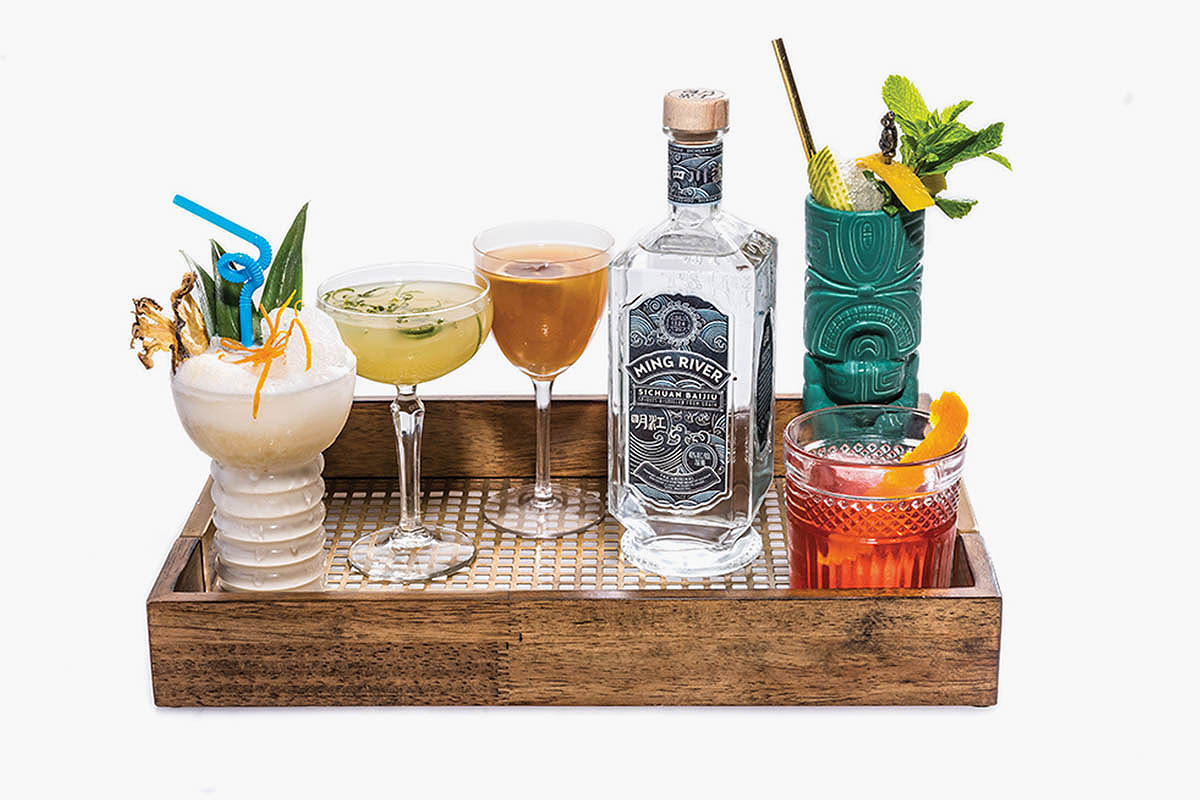The world’s most valuable spirits brand?
If you said Johnnie Walker or Jack Daniel’s … well, good guess, but wrong. The two whisk(e)y giants finished in fifth and sixth place in the recent Brand Finance Spirits 2019 rankings.
The four highest rankings actually went to Chinese baijiu brands, with the company Moutai valued at $30.5 billion over the last year, or over seven times the value of the aforementioned whiskies.
For Americans, this begs the question: what the heck is baijiu, how is it the most widely consumed alcohol in the world and why isn’t the Western world embracing it (yet)?
To help us, we spoke with Derek Sandhaus, the author of the only English-language baijiu book (Baijiu: The Essential Guide to Chinese Spirits), founder of DrinkBaijiu.com and co-founder of Ming River Sichuan Baijiu, launched in the U.S. just last summer and crafted by Luzhou Laojiao, China’s oldest continuously operating distillery.
A quick primer: Baijiu is a rather broad category with four recognized and very distinct styles — rice aroma, light aroma, strong aroma and sauce aroma. Ming River (45 percent ABV) in particular is a sorghum-based, strong-aroma baijiu created using solid-state fermentation in subterranean mud pits before being distilled and aged for up to two years in Chinese pot stills.
InsideHook: Why hasn’t the Western world embraced baijiu?
Derek Sandhaus: That’s a good question, and one that doesn’t have a single answer. Baijiu is a sprawling category of spirits, with about a dozen distinct iterations that have little in common besides being grain spirits from China. So there’s a lot of confusion about what is. Some people encounter one style and are put off, but as with anything some baijius are more approachable than others and some are more challenging. Understanding the differences and finding which baijiu is right for you can be a heavy educational lift. Moreover, outside of China, it can be difficult to source many of the styles.
What’s the history of the spirit?
China’s been producing a drink that resembles what we think of as baijiu for at least five or six hundred years, but production was scattered and limited mostly to small-scale rural distilleries until the 1950s. When the modern baijiu industry was born, China had recently become a Communist country and was isolated from much of the West. So it’s not until the 1980s that any significant baijiu imports appear in the U.S., and it’s only in the last five to ten years that anyone bothered to try to sell it to non-Chinese customers.
Bartenders are always early adopters. What’s their take?
When I started writing about baijiu less than a decade ago, there were no bars with baijiu cocktails on their menu. Now there are hundreds. There’s still a long way to go before it will become a popular mainstream product, but I’m heartened by what I’ve seen in the past year of selling it in the U.S. and Europe.
RELATED: A Higher-Proof Version of Japan’s Favorite Spirit Is Coming to America
Some bartenders are crazy about it and others are not. It can be confusing, because it’s not just a single spirit, and some styles are easier to work with than others. There’s not a canon of classical baijiu cocktail recipes to draw upon, but for bartenders who understand flavor, baijiu opens up a lot of possibilities. You just can’t get what baijiu offers from other drinks currently on the back bar.
So what’s the ideal way to drink it?
That really boils down to personal preference. I got into baijiu when I was living in Sichuan, so I like drinking it the way I was taught: neat shots at room temperature alongside spicy food. The flavors of the food and the drink complement each other nicely.
That said, I spend a lot of time at cocktail bars drinking it mixed, and I love seeing the drinks people come up with. Some of the cocktails—especially the tropical cocktails—are incredible. What makes baijiu cocktails so much fun, is every time you find a bar with one on their menu, there’s a good bet that you’re trying flavor combinations that have never before been attempted. It’s really exciting.
Is the method of fermentation the biggest difference maker between Chinese spirits like baijiu and spirits in this part of the world?
I’d say so. Chinese grain spirits — and East Asian grain spirits more broadly— are largely distinguished by their use of an ingredient called qu (koji in Japan), which is a grain-based culture of microorganisms, mostly mold, yeast and bacteria. When mixed with a grain it can initiate fermentation of solid grain, whereas in the West fermentation is typically performed on sugary liquids. Qu gives East Asian grain alcohol a much different character, and qu also imparts every single producer’s products with a flavor that is completely unique to the microclimate of the place.
For someone who’s never tried baijiu, what would you tell them about Ming River?
On the nose and palate, it delivers a strong burst of pineapple, with notes of anise, a little spice and an intriguing cheesy note. It’s complex and delicious, and it goes really nicely in tiki-style cocktails. It also plays nicely with bitters. Right now, we’re all quite taken with the General Ming, which is simple enough for anyone to make. And of course, it goes well with spicy Sichuan food.
Join America's Fastest Growing Spirits Newsletter THE SPILL. Unlock all the reviews, recipes and revelry — and get 15% off award-winning La Tierra de Acre Mezcal.
